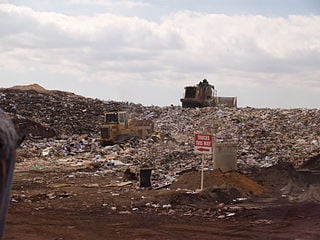If the idea here is to reduce landfill waste we could stand to do a much better job. Less landfill stock equals less landfill gas. It’s better on and for the air.

I never met cardboard I didn’t like
I think of all the household products I buy. I would say a good 50 percent are packaged in plastic and the other half in paper. Sometimes it’s a combination of both. Sometimes it’s a mix of plastic, paper and a third material – Styrofoam.
Paper, no matter what kind, when discarded, goes into my blue-colored “recycle” container. It’s the same for a lot of plastics. The Styrofoam, that goes in the trash.
Butter packaging is like the perfect example. For years, this dairy product has been packaged in paper. The shipping container or box butter comes in is made of cardboard.
Since recyclers would like material free of food scraps, grease and whatnot, the individual butter wrappers are best washed, wiped clean prior to being disposed of and destined for the recycler. The same is true of empty pizza boxes.
I recently had delivered to my door a new stand for the living room television. Since it came in kit form it needed assembling. The relatively large box it was delivered in was cardboard, though the assorted packaging material inside consisted of Styrofoam, pieces of particle board (otherwise known as pressed wood) and, for the television stand hardware like screws, bolts, wood dowels, pins, etc., these came in separate plastic bags.
Hand soap is another great example because that comes in cardboard too. The other type – the liquid kind – is packaged in plastic. I prefer the former.
Staples, which I don’t care to use (I like paper clips), well, they’re either packaged in cardboard or in plastic boxes.
Meanwhile, container choices for fruit juice drinks which, by the way, I no longer consume, are paper (cardboard), foil (sealed), plastic or glass (bottle). It’s similar for milk, the exceptions here being the foil packaging and glass bottles. For soda, it’s either plastic bottles or metal cans.
As much as I can, I line the kitchen trash container with a paper grocery bag. Even though I know such a bag will end up in the landfill, it will eventually decompose. That’s better than it being burned but not as good as being recycled. I wish there was a better way or a throw-away product that more rapidly biodegraded.
Plastic forks, knives and spoons, no thanks. I use metal utensils that I can sink- or dishwasher clean, the detergent or soap for such available in either cardboard or plastic packaging material.
With the holidays approaching, invariably gifts will be wrapped in paper even though the packaging material for such will include cardboard, plastic, Styrofoam, glass, metal, wood, you name it. Some of this material will end up being burned in the fireplace, but should not. With synthetic fireplace logs a popular item this time of year, I would not at all be surprised if the paper the logs are packaged in can be fireplace-burned as well, though I don’t know this for certain.

When it comes to waste, we obviously live in a throw-away world, which more or less is saying the same thing. The less we can throw away, obviously the better. If we thought about it, probably half of what is sent to the landfill could be processed more responsibly, really meaning in a more environmentally conscious manner. Think recycling, re-purposing and reusing.
Most preferable is when the container for a consumer good can be used over and over and over again. Not only is that the way it used to be with bottled-in-glass soft drinks but they had redemption value to boot. The same was true of milk delivered to the doorstep, but my best guess has it that those had no repurchase value. I cannot tell you the last time I saw milk bottled in glass.
Wrap-up
This may sound crazy but hotel, motel toilet paper is the best. It comes individually paper-wrapped and the cardboard spool in the center left over when all used up, well, it’s cardboard. Any questions?
Images: Ashley Felton (upper); George Chernilevsky (lower)
This post has been updated on Jun. 16, 2020 @ 1:38 p.m. Pacific Daylight Time.
– Alan Kandel
Quality of life by eliminating waste through repackaging recycling strict water regulation to eliminating destroying what water our environment provides us nature gives us are all most important!
Paper doesn’t harm landfills Sooner or later, it becomes compost.